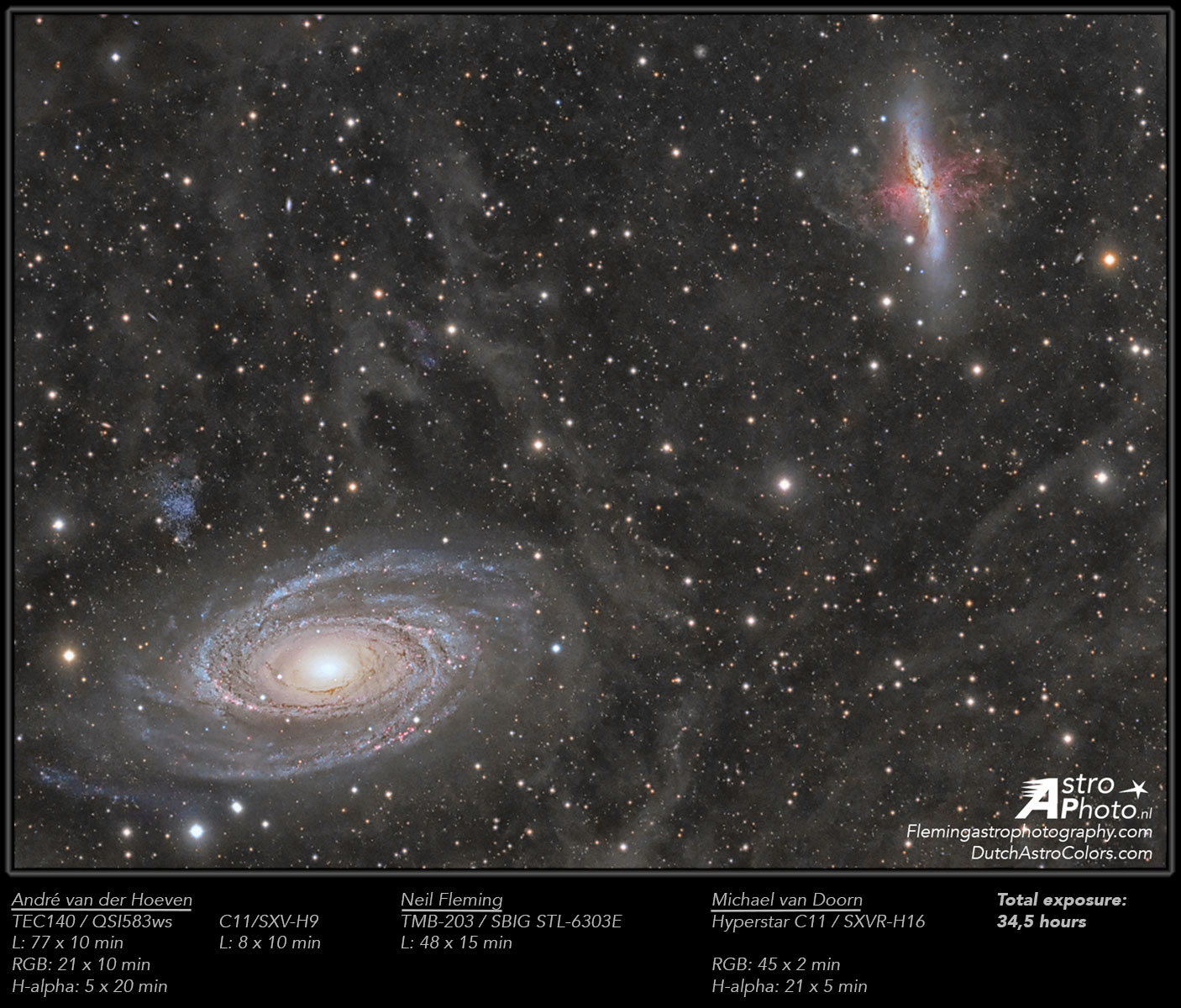A few days ago I wrote about a galaxy that was tough to see because of Milky Way field stars. But our galaxy is far more than just a bunch of stars smattered about. There is also a huge amount of gas and dust with varying temperatures. Some of the hotter and more illuminated gas and dust are what make nebulae so lovely in space. But the cold gas and dark dust that is just out floating in the cold interstellar medium? That stuff gets in the way.

A normal image of interacting galaxies M81 and M82 would try to hide the dark gas and dust that permeates the field above to ensure the galaxies look their best. But with a bit of careful editing, the gas and dust can be brought forward, showing how much of it there is in the space between stars.
This gas and dust makes up what we call an integrated flux nebula, where it is illuminated not by a newly formed cluster of stars, but by the combined light of the Milky Way itself, similar to how we see the diffuse light of the Milky Way reach across the sky at night. The good news is that it means this gas and dust isn’t very bright and usually isn’t that noticeable when taking photographs, but it is there.
It tends to pose a bigger problem for spectroscopy, where looking at the light from distant objects gives us a measurement of it’s redshift. When the galaxy’s light is absorbed a bit by the gas and dust in front, it can affect the measurement slightly, especially for more distant galaxies.
The important part is that we are within a galaxy, and we are surrounded by the dust, gas, and stars that form it. It gives us a lot to look at in our own night sky, even though it gives us a bit of trouble seeing beyond the shores of the cosmic ocean. Still, I’m glad we have a night sky full of stars to appreciate. If we were outside the galaxy, nighttime would truly make us feel like we were alone in the dark.
